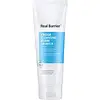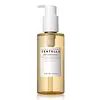What's inside
What's inside
 Key Ingredients
Key Ingredients

No key ingredients
 Benefits
Benefits

 Concerns
Concerns

 Ingredients Side-by-side
Ingredients Side-by-side

Water
Skin ConditioningPotassium Cocoyl Glycinate
Disodium Cocoamphodiacetate
CleansingPotassium Cocoate
EmulsifyingDisodium Cocoyl Glutamate
CleansingHelianthus Annuus Seed Oil
EmollientSodium Sweetalmondamphoacetate
CleansingCarbomer
Emulsion StabilisingMyristoyl/Palmitoyl Oxostearamide/Arachamide Mea
Skin ConditioningDihydroxyisopropyl Palmoylpalmamide
HumectantBrassica Oleracea Italica Sprout Extract
EmollientCentella Asiatica Extract
CleansingMadecassoside
AntioxidantPanthenol
Skin ConditioningTriticum Vulgare Sprout Extract
Skin ConditioningSpirulina Platensis Extract
Skin ProtectingAllantoin
Skin ConditioningTocopheryl Acetate
AntioxidantCitrus Aurantium Bergamia Fruit Oil
MaskingCananga Odorata Flower Oil
MaskingCedrus Atlantica Bark Oil
MaskingPelargonium Graveolens Flower Oil
MaskingLavandula Angustifolia Oil
MaskingCitrus Limon Peel Oil
MaskingVetiveria Zizanoides Root Oil
MaskingDisodium EDTA
1,2-Hexanediol
Skin ConditioningCaprylyl Glycol
EmollientWater, Potassium Cocoyl Glycinate, Disodium Cocoamphodiacetate, Potassium Cocoate, Disodium Cocoyl Glutamate, Helianthus Annuus Seed Oil, Sodium Sweetalmondamphoacetate, Carbomer, Myristoyl/Palmitoyl Oxostearamide/Arachamide Mea, Dihydroxyisopropyl Palmoylpalmamide, Brassica Oleracea Italica Sprout Extract, Centella Asiatica Extract, Madecassoside, Panthenol, Triticum Vulgare Sprout Extract, Spirulina Platensis Extract, Allantoin, Tocopheryl Acetate, Citrus Aurantium Bergamia Fruit Oil, Cananga Odorata Flower Oil, Cedrus Atlantica Bark Oil, Pelargonium Graveolens Flower Oil, Lavandula Angustifolia Oil, Citrus Limon Peel Oil, Vetiveria Zizanoides Root Oil, Disodium EDTA, 1,2-Hexanediol, Caprylyl Glycol
Ethylhexyl Stearate
EmollientCetyl Ethylhexanoate
EmollientSorbeth-30 Tetraoleate
EmulsifyingCaprylic/Capric Triglyceride
MaskingCitrus Aurantium Bergamia Fruit Oil
MaskingCentella Asiatica Extract
CleansingSimmondsia Chinensis Seed Oil
EmollientOlea Europaea Fruit Oil
MaskingHelianthus Annuus Seed Oil
EmollientEthylhexylglycerin
Skin ConditioningPelargonium Graveolens Flower Oil
MaskingRosa Damascena Flower Oil
MaskingLimonene
PerfumingLinalool
PerfumingEthylhexyl Stearate, Cetyl Ethylhexanoate, Sorbeth-30 Tetraoleate, Caprylic/Capric Triglyceride, Citrus Aurantium Bergamia Fruit Oil, Centella Asiatica Extract, Simmondsia Chinensis Seed Oil, Olea Europaea Fruit Oil, Helianthus Annuus Seed Oil, Ethylhexylglycerin, Pelargonium Graveolens Flower Oil, Rosa Damascena Flower Oil, Limonene, Linalool
 Reviews
Reviews

Alternatives
Ingredients Explained
These ingredients are found in both products.
Ingredients higher up in an ingredient list are typically present in a larger amount.
Centella Asiatica Extract (Centella) is derived from an herb native to Southeast Asia. It is famous for its anti-inflammatory and soothing properties.
Centella is rich in antioxidants and amino acids, such as Madecassic Acid and Asiaticoside.
Studies show the compounds in centella help with:
The combination of all these properties makes centella effective at soothing, hydrating, and protecting the skin.
Other great components of centella include Vitamin A, vitamin C, several B vitamins, and Asiatic Acid.
Fun fact: Centella has been used as a medicine and in food for many centuries. As a medicine, it is used to treat burns, scratches, and wounds.
Learn more about Centella Asiatica ExtractCitrus Aurantium Bergamia Fruit Oil is the oil from the bergamot orange. It is native to Italy.
This ingredient is used to add fragrance to products. It contains limonene, linalool, and linalyl acetate.
The term 'fragrance' is not regulated in many countries. In many cases, it is up to the brand to define this term. For instance, many brands choose to label themselves as "fragrance-free" because they are not using synthetic fragrances. However, their products may still contain ingredients such as essential oils that are considered a fragrance.
When used topically, Citrus Aurantium Bergamia Fruit Oil is a photosensitizer due to its furanocoumarins. Photosensitizers make the skin and eyes much more sensitive to sunlight. Photosensitizers are linked to skin cancer.
However, more cosmetics using Citrus Aurantium Bergamia Fruit Oil are removing the furanocoumarins.
Bergamot oil was also found to have anti-inflammatory, antibacterial and antifungal properties.
Learn more about Citrus Aurantium Bergamia Fruit OilHelianthus Annuus Seed Oil is the oil derived from the seeds of a Sunflower. Sunflower seed oil is non-fragrant. It is an emollient, meaning it helps to soften the skin.
Sunflower seed oil contains many fatty acids. The fatty acids found in sunflower seeds include (from highest amount to least): linoleic acid, myristic acid, palmitic acid, stearic acid, arachidic acid, oleic acid, and linolenic acid.
These fatty acids help the skin create ceramides. Ceramides play a role in repairing the skin barrier.
Helianthus Annuus Seed Oil helps moisturize the skin. This in turn helps the skin look more rejuvenated and smoother.
Sunflowers are rich in vitamin E.
Historians believe Indigenous cultures of North America domesticated sunflowers before corn. Thus they relied on sunflower oil for a variety of uses. One such use is moisturizing skin and hair.
Sunflower seed oil may not be fungal acne safe. We recommend speaking with a professional if you have any concerns.
Learn more about Helianthus Annuus Seed OilPelargonium Graveolens Flower Oil is the pressed oil of the Rose Geranium plant. It is volatile, meaning it evaporates off the skin.
Fragrant components of Rose Geranium include citronellol and geraniol. These may cause allergies and skin-sensitivity. We recommend speaking with a professional if you have any concerns.
The scent of Rose Geranium closely resembles traditional roses.
Learn more about Pelargonium Graveolens Flower Oil